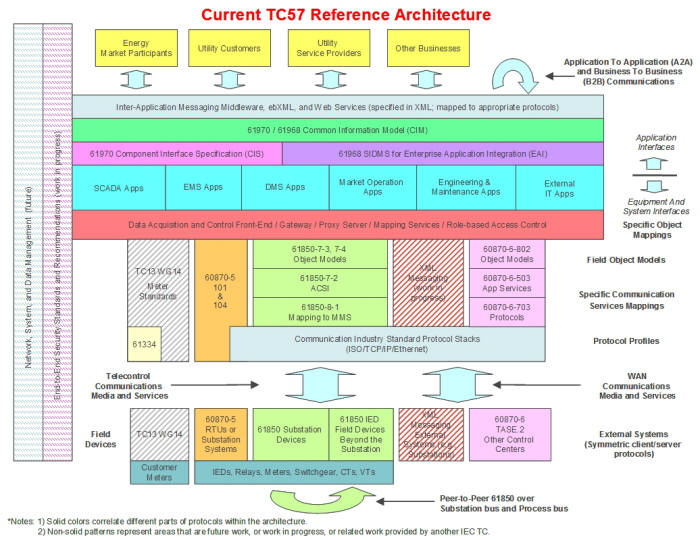One can consider IntelliGrid Architecture to be the third wave of focused
efforts endeavoring to define reusable architectural components for energy
enterprise and industry-wide applications. The first two waves of industry
efforts were the Integrated Utility Communications Project and the UCA® 2
Effort.
Integrated Utility Communications
Project
The first effort was performed through the
efforts of the Integrated Utility Communications Project, which initiated by
EPRI® in 1986. Through these initial efforts, a cadre of utility domain experts
was consulted and their views combined into the first incarnation: UCA (Utility
Communications Architecture). What was most impressive about this effort was
the top-down, requirements-driven analysis performed by objective professionals
in pursuit of a common communications denominator in the utility industry.
UCA 2 Effort
EPRI furthered the effort in a series of
tailored collaborations that endeavored to apply the original UCA architecture.
As UCA implementations efforts moved forward, improvements and clarifications
were made to the document, which resulted in the issuance of enhanced
architectural descriptions that became know as UCA
2.0. Crucial to the success of UCA was the involvement of domain experts
and developers in the application of the concepts. At this time, EPRI took
steps to submit the UCA documents to the International Electrotechnical
Commission (IEC) Technical Committee 57, where the work was accepted into the
IEC 61850 standards process.

These original EPRI efforts succeeded in establishing a
direction for the industry and creating momentum toward abstract modeling and interoperability.
The IEC 61850 standards are beginning to mature and major vendors are
developing products from these standards. In addition, EPRI has worked to
develop the Control Center API project into
the Common Information Model through contributions to the IEC TC57 standards
initiatives. Finally, EPRI has facilitated the formation of a users and vendors
association, The UCA International Users Group.
More than a dozen years have
elapsed since the first UCA effort. During this period two things have become
apparent. First, an extraordinary evolution in communications and computing
technology has occurred and will continue. Second, the scale and scope of
advanced automation extends beyond the standards that have developed for the
energy industry. Standards and infrastructure development from a variety of
industries must now be included in the design and enhancement of an
industry-level architecture for the energy industry. The energy industry
architecture must now include standards from information technology, building
and home automation, and eCommerce, to name just a few. It is important to now
advance the concepts originally conceived and laid down by the UCA into the
modern age. The IntelliGrid Architecture project represents this effort.